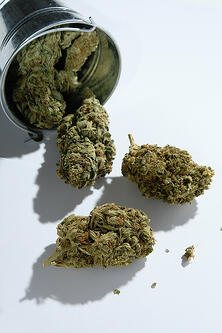If you have ever worked with samples in the food industry you must have run into the challenges of working with various matrices. Each of them ranging from gummies, flour and oils can keep providing challenges even when you have prepped the sample and it is about to go on the analytical instrument.
This is the reason AOAC Method 2018.11 requires sample extracts to be filtered below 0.22µm for THC potency testing. So how can you break through and maximize filtering out batches of samples at once instead of one at a time which can be tedious and time consuming?
Filtering hemp samples is tedious and can be a multi-step job based on the matrix. Typically, each sample is filtered manually. This leads to individual time-consuming manual labor. With that it could lead to inconsistencies. I know that I might not be filtering the same way as another user as I might put too much pressure on the syringe and force the extract through the filtering disk. This type of action could lead to more issues further down the workflow and could result in re-filtering and or possibly starting over.
on the matrix. Typically, each sample is filtered manually. This leads to individual time-consuming manual labor. With that it could lead to inconsistencies. I know that I might not be filtering the same way as another user as I might put too much pressure on the syringe and force the extract through the filtering disk. This type of action could lead to more issues further down the workflow and could result in re-filtering and or possibly starting over.
With batches of filtering and possible inconsistencies there is a way to streamline the workflow to ensure the tedious filtering and re-filtering is done precise and has consistency throughout the batch. Applying instrument automation and sealing filter plates a lab can take the pain point out and have more of a peace of mind that samples are filtered more uniform and at the correct rate.
The Biotage Extrahera™ Classic is a powerful, user-friendly automation system for Supported Liquid Extraction (SLE), Solid Phase Extraction (SPE), Phospholipid Depletion (PLD) and Protein Precipitation (PPT) based methods, in plate or column formats. By applying the ISOLUTE® FILTER+ High Performance Filtration Plates with the Extrahera™ Classic they provide effective, workflow friendly filtration of samples, perfect for use prior to LC-MS/MS analysis. I like these 96 well plates because they are designed to prevent sample particulates from reaching the analytical LC column, protecting the analytical system from particulate build up over time. They also exceed the filtration criteria of AOAC Method 2018.11 by filtering your samples down to 0.20µm.
Once the samples have been filtered, they are dispensed into an ISOLUTE® Collection Plates. Once the samples are in the plates, they can be sealed to avoid evaporation and placed right into the analytical instrument to be run. This is possible because the sealing plate is pierceable. This gives you the ability to automate filtration & collect directly in an analytical 96 well plate in as little as 30 minutes! Now, if you don’t need all that automation, you can still take advantage of ISOLUTE® FILTER+ plates by using manual positive pressure processing equipment such as the Biotage® Pressure+ 96.
I really like this workflow option as it keeps the batch together and eliminates the user interaction with individual samples and vials. I have been in the laboratory environment for over 24 years and any time I have the option to automate and avoid manual intervention I will as I know from lab experience it could lead to possible errors and or mislabeling which could really impact a laboratory’s productivity.
For more information, click the link below!

 Organic Workflow
Organic Workflow Peptide Workflow
Peptide Workflow Scale-Up Flash Purification
Scale-Up Flash Purification  Sample Preparation
Sample Preparation Biomolecule Purification
Biomolecule Purification Oligo synthesis
Oligo synthesis Scavengers and Reagents
Scavengers and Reagents Service & Support
Service & Support Accessories & Spare parts
Accessories & Spare parts Investors
Investors Reports & News
Reports & News The Share
The Share Corporate Governance
Corporate Governance Calendar
Calendar Sustainability
Sustainability Our Offering
Our Offering Our History
Our History Our Locations
Our Locations Leadership
Leadership